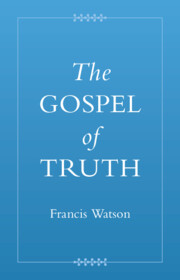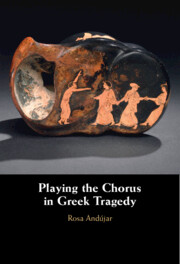Refine search
Actions for selected content:
149391 results in Classical Studies
THE FIRST KNOWN INSCRIPTION FROM HATRA IN GREEK AND HATRAN ARAMAIC: NEW INSIGHTS INTO SOCIOLINGUISTICS AND RELIGION AT THE CITY OF THE SUN
-
- Journal:
- IRAQ , First View
- Published online by Cambridge University Press:
- 27 October 2025, pp. 1-31
-
- Article
-
- You have access
- Open access
- HTML
- Export citation

Plato on Comedy and Tragedy
- The Role of Drama in the Pursuit of Happiness
-
- Published online:
- 24 October 2025
- Print publication:
- 13 November 2025
INTERTEXTUALITY AND RECEPTION IN JULIUS VALERIUS’ RES GESTAE ALEXANDRI MACEDONIS - Hartmut Wulfram (ed.), Der lateinische Alexanderroman des Iulius Valerius. Sprache, Erzählung, Kontext. Unter redaktioneller Mitarbeit von Katharina Gerhold, Gregor Schöffberger und Katharina-Maria Schön. (Millennium-Studien 101.) Pp. viii + 233. Berlin and Boston: De Gruyter, 2023. Cased, £96, US$120.99. ISBN: 978-3-11-108558-6 (978-3-11-109167-9 open access).
-
- Journal:
- The Classical Review , First View
- Published online by Cambridge University Press:
- 24 October 2025, pp. 1-3
-
- Article
- Export citation
A JOURNEY THROUGH LATE ANTIQUE CILICIA - Arabella Cortese, Cilicia as Sacred Landscape in Late Antiquity. A Journey on the Trail of Apostles, Martyrs and Local Saints. (Spätantike – Frühes Christentum – Byzanz 53.) Pp. 320, ill., colour pls. Wiesbaden: Reichert, 2022. Cased, €198. ISBN: 978-3-7520-0637-7.
-
- Journal:
- The Classical Review , First View
- Published online by Cambridge University Press:
- 24 October 2025, pp. 1-2
-
- Article
-
- You have access
- Open access
- HTML
- Export citation

The Secret Book of John
-
- Published online:
- 23 October 2025
- Print publication:
- 06 November 2025

The Gospel of Truth
-
- Published online:
- 23 October 2025
- Print publication:
- 06 November 2025

The Archaeology of the Cyclades in the Roman and Late Antique Periods
- Globalization, Christianization and Resilience
-
- Published online:
- 23 October 2025
- Print publication:
- 06 November 2025

Playing the Chorus in Greek Tragedy
-
- Published online:
- 23 October 2025
- Print publication:
- 06 November 2025
Chapter 1 - Introduction
-
- Book:
- Ancient Assyrians
- Published online:
- 09 October 2025
- Print publication:
- 23 October 2025, pp 1-16
-
- Chapter
- Export citation
Preface
-
- Book:
- Ancient Assyrians
- Published online:
- 09 October 2025
- Print publication:
- 23 October 2025, pp xi-xii
-
- Chapter
- Export citation
Chapter 4 - Aššur, King of the Gods
-
- Book:
- Ancient Assyrians
- Published online:
- 09 October 2025
- Print publication:
- 23 October 2025, pp 158-259
-
- Chapter
- Export citation
Maps
-
- Book:
- Ancient Assyrians
- Published online:
- 09 October 2025
- Print publication:
- 23 October 2025, pp ix-x
-
- Chapter
- Export citation
Index
-
- Book:
- Ancient Assyrians
- Published online:
- 09 October 2025
- Print publication:
- 23 October 2025, pp 305-312
-
- Chapter
- Export citation
Abbreviations
-
- Book:
- Ancient Assyrians
- Published online:
- 09 October 2025
- Print publication:
- 23 October 2025, pp xix-xxvi
-
- Chapter
- Export citation
Note on Transcription and Translation
-
- Book:
- Ancient Assyrians
- Published online:
- 09 October 2025
- Print publication:
- 23 October 2025, pp xvii-xviii
-
- Chapter
- Export citation
Chapter 3 - They Swore by the Life of the City
-
- Book:
- Ancient Assyrians
- Published online:
- 09 October 2025
- Print publication:
- 23 October 2025, pp 77-157
-
- Chapter
- Export citation
Contents
-
- Book:
- Ancient Assyrians
- Published online:
- 09 October 2025
- Print publication:
- 23 October 2025, pp vii-viii
-
- Chapter
- Export citation
Copyright page
-
- Book:
- Ancient Assyrians
- Published online:
- 09 October 2025
- Print publication:
- 23 October 2025, pp iv-iv
-
- Chapter
- Export citation
Bibliography
-
- Book:
- Ancient Assyrians
- Published online:
- 09 October 2025
- Print publication:
- 23 October 2025, pp 269-304
-
- Chapter
- Export citation
Dedication
-
- Book:
- Ancient Assyrians
- Published online:
- 09 October 2025
- Print publication:
- 23 October 2025, pp v-v
-
- Chapter
- Export citation
